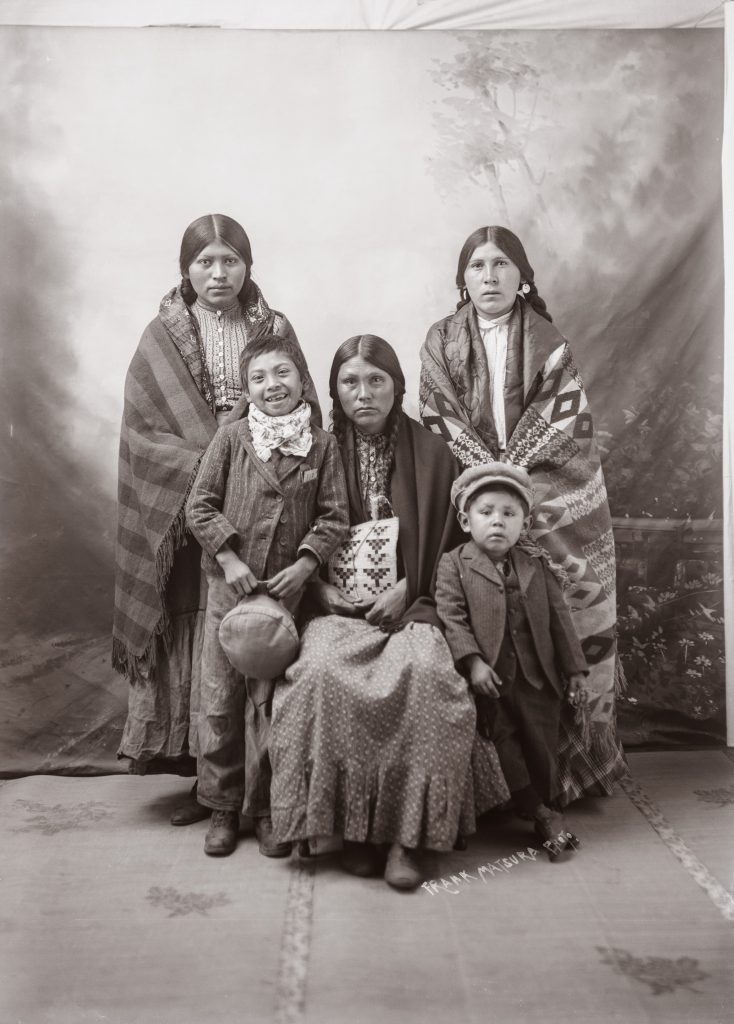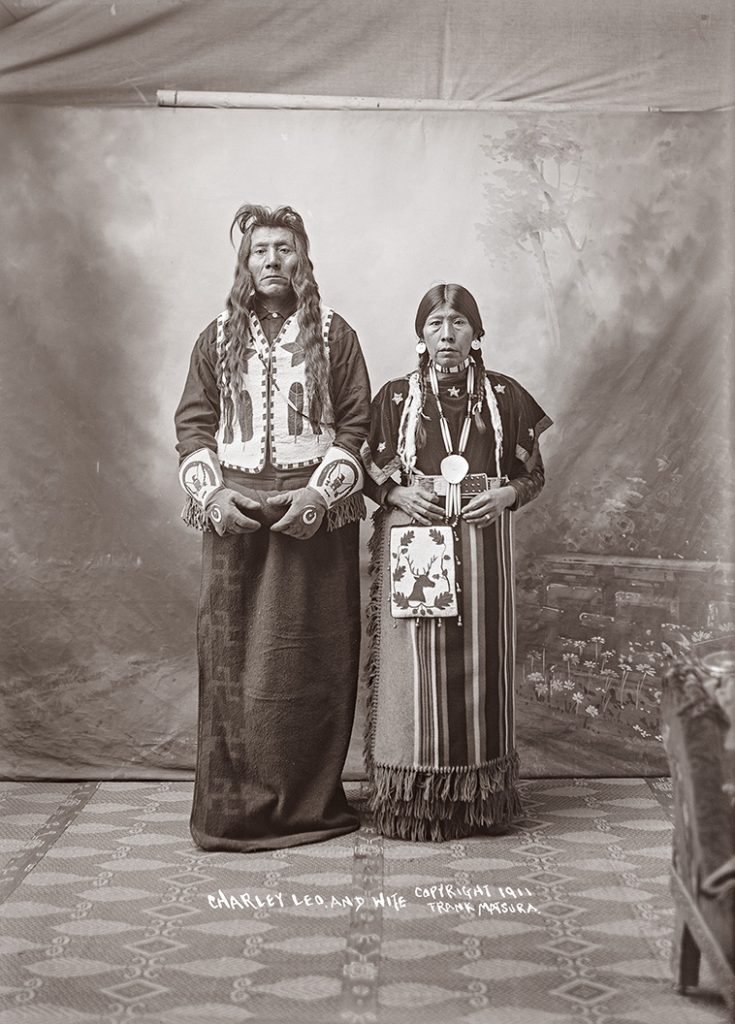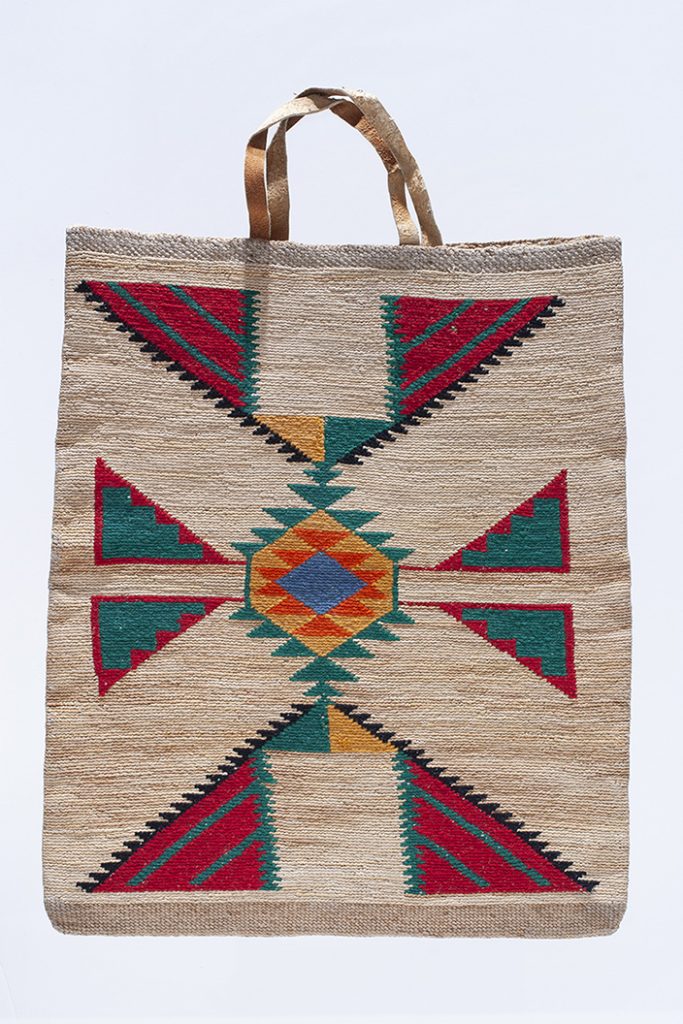Frank Sakae Matsura (Japanese, 1873-1913), Chilliwist Jim (Second Avenue, Okanogan, WA) (detail), c.1903-1913, enlarged pigment print from gelatin dry plate scan, 46 x 33 in. Okanogan County Historical Society, MATSURA6389. Digital image courtesy of Dean Davis Photography
Frank S. Matsura: Portraits from the Borderland
February 1, 2025 – September 7, 2025
In 1903, having immigrated from Japan, Frank Sakae Matsura (1873-1913) arrived in newly incorporated Okanogan County along the U.S.–Canadian border in Washington state. Matsura had been formally trained in photography and established a studio in the small town of Okanogan, a cultural and geographic “borderland” where he, as an outsider, witnessed a time of change in the region.
In his studio, Matsura created detailed portraits of the Indigenous people of the region. More than a century later, his work is now receiving attention as some of the most visually potent and nuanced images of Indigenous peoples from the era—conceptually sophisticated and collaborative portraits of individuals and families with whom he maintained trusting relationships. The detailed images share their lived experiences and converging customs during a time of transition.
The Frank S. Matsura: Portraits from the Borderland exhibition features 39 photographs recovered from Matsura’s archive paired with period-specific cultural items from the Indigenous Plateau, a High Desert region that encompasses the Columbia River and its tributaries. Exploring Indigenous representation through detailed photography as well as objects, the exhibition spotlights some of Matsura’s most culturally significant work against a backdrop of regional transformation in the early 20th century.
The exhibition originated at the Northwest Museum of Arts and Culture in Spokane, Wash. Matsura’s photographs are blown up to better share their impressive detail. They capture moments that reveal Syilx (Okanogan) communities adapting to a changing time. The exhibition includes cultural objects, such as gloves, beaded cornhusk bags and leggings, drawn from the Northwest Museum of Arts and Culture’s American Indian Collection and from the Doris Swayze Bounds collection at the High Desert Museum. They will be next to Matsura’s photographs to bring to life attire features in the images.
Washington State University Associate Professor Michael Holloman (Colville Confederated Tribes), a curator of the original exhibition, helped the High Desert Museum’s exhibition. He will also soon publish a book about Matsura’s life with PA Press/Chronicle Books. Holloman calls Matsura a fascinating figure who made choices that raise more questions than answers—including why he left Japan, briefly settled in Seattle, where there was a significant-size Japanese immigrant community, and then left again to make a home east of the Cascade mountains in the very rural Okanagan region of the Columbia River Plateau.
Immediately, Matsura became a popular member of the Okanagan community, and 10 years later when he died suddenly, his funeral became a community-wide event. During his lifetime, Matsura attracted many people from across the region for portraiture, including individuals and families from upper Indigenous Plateau tribal communities. Among Matsura’s total body of work are visually potent, intimate and collaborative studio portraits telling nuanced stories of regional Indigenous identity.
“Frank clearly was personable and had a sense of humor, and he clearly developed relationships with the people he photographed,” Holloman said. “As a Japanese immigrant he was also new to cultures in North America and in the region where he settled, which perhaps freed him to approach portraiture without enforcing the stereotypes that were common at that time.”
The exhibition has four themes: The Myth of the Vanishing Indian, Beauty and Utility, Collapsing Hierarchy and Geijutsu Shashin (Photographic Art). Each theme considers various ways in which Matsura’s artistic legacy challenges stereotypes, unsettles power dynamics in image-making, and fills important gaps in historical and regional narratives.
Unlike some of his contemporaries, whose work reinforced erroneous beliefs that Indigenous people would soon disappear, Matsura’s images reveal Plateau communities adapting and surviving during a changing time. Gingham and plaid, work wear, and crocheted accessories blend fluidly with “trade blankets,” glass beads and natural ancestral materials. Instead of nostalgia, Matsura’s portraits point to an ongoing and complex cycle of reinvention.
The Plateau cultural belongings and regalia featured in Matsura’s portraiture are at once functional, vibrant and symbolic. Some materials, like buckskin, evoke durability and continuity. Others, like glass beads introduced by the fur trade, represent invention and transition. Floral motifs embellishing many of these items are influenced by European embroidery patterns, translated into regionally specific iconography meaningful to Plateau communities.
Paired with cultural items in the gallery, Holloman said, “these objects bring Matsura’s photographs into living color.”
In addition, a series of video portraits produced by filmmaker and storyteller LaRonn Katchia (Warm Springs, Wasco, Paiute) will greet visitors as they enter the exhibition gallery. Featured are contemporary stories of three young, vibrant and accomplished women from The Confederated Tribes of Warm Springs: Kahmussa Green, Miss Warm Springs and advocate for missing and murdered Indigenous women; Thyreicia Simtustus, an aspiring pilot breaking barriers in aviation; and Kiahna Allen, a passionate kayaker launching her own nonprofit. They appear in both contemporary dress and traditional regalia, showcasing the continuum of culture and tradition from the past to the present day.
“These women are not only redefining leadership as Indigenous people today but are also bringing their traditional values with them, embodying the essence of who we are today,” Katchia said.
Frank S. Matsura: Portraits from the Borderland is organized by the Northwest Museum of Arts and Culture and was curated by Holloman and Northwest Museum of Arts and Culture Associate Curator of Special Projects Anne-Claire Mitchell. The exhibition will be on view through September 7, 2025.

Frank Sakae Matsura (Japanese, 1873-1913), Wapato Smithins Family (detail), c.1903-1913, enlarged pigment print from gelatin dry plate scan, 33 x 46 in. Okanogan County Historical Society, MATSURA6371. Digital image courtesy of Dean Davis Photography

Frank Sakae Matsura (Japanese, 1873-1913), Charley Leo and Wife, 1911, enlarged pigment print from gelatin dry plate scan, 33 x 46 in. Okanogan County Historical Society, MATSURA6345. Digital image courtesy of Dean Davis Photography

Unnamed Maker (Interior Salish and Sahaptin), [Woman’s Cornhusk Bag], c.1925-1962, twine, smoked buckskin, cornhusk, wool, 16 x 13 1/2 in. Northwest Museum of Arts and Culture, 1780.613. The Chap C. Dunning Memorial Collection, Gift of Chap C. Dunning, 1962. Digital image courtesy of Dean Davis Photography
Made possible by
With support from














